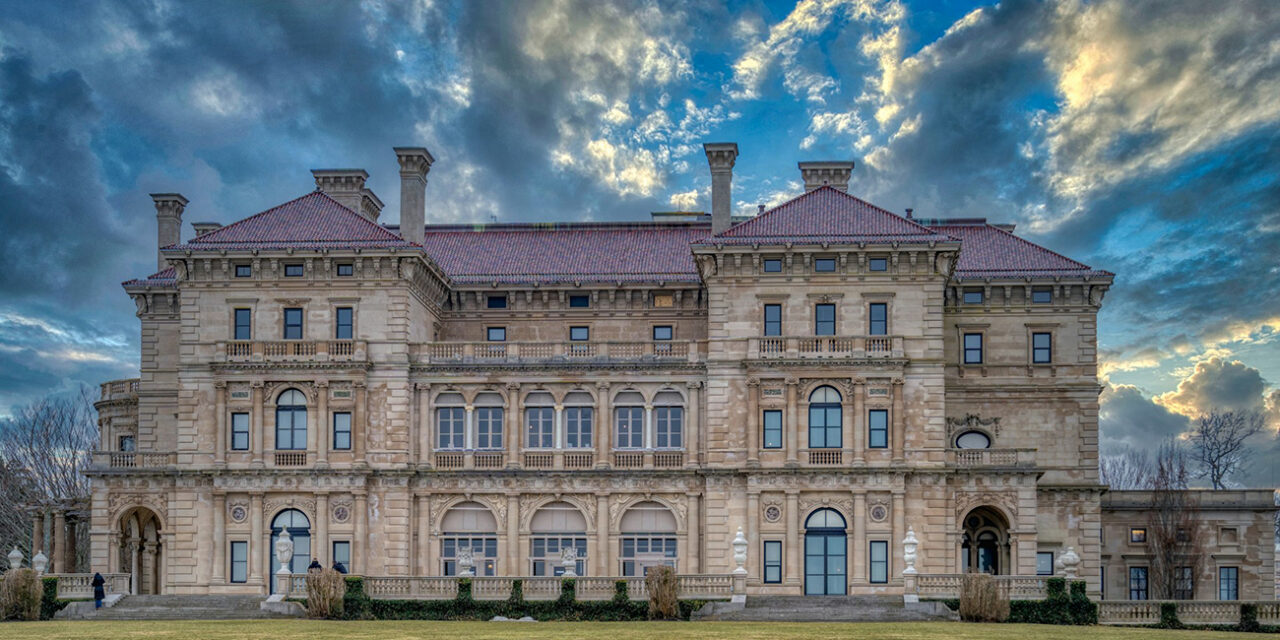Despite being the smallest state in the United States, Rhode Island has a significant and diverse history.
Rhode Island has played an essential part in developing the United States from its early colonial foundations to its role in the American Revolution and industrial growth.
Below, we explore Rhode Island’s fascinating history, covering its foundation, key historical events, and notable landmarks.
Table of Contents
Early History
Indigenous Inhabitants and European Exploration
Before European settlers arrived, Rhode Island was home to various Native American tribes, including the Narragansett, Niantic, and Wampanoag.
- These tribes had established societies with rich cultures, agriculture, and trade networks.
- Europeans first explored the area in the early 16th century, with notable explorers such as Giovanni da Verrazzano charting the coast.
The indigenous peoples and early European explorers laid the groundwork for future settlements.
Colonial Period
Rhode Island’s colonial history began in 1636 when Roger Williams founded Providence after being banished from the Massachusetts Bay Colony due to his religious beliefs.
- Williams started Rhode Island as a safe haven for religious freedom, welcoming those persecuted for their beliefs.
- Other settlements, such as Portsmouth and Newport, were founded soon after, promoting similar ideals of tolerance and self-governance.
Rhode Island’s commitment to religious freedom and tolerance made it unique among the American colonies.
Growth and Development
Rhode Island grew steadily, becoming a center for trade and commerce.
- The colony’s economy was based on agriculture, fishing, and trade, including the controversial transatlantic slave trade.
- In 1644, Rhode Island obtained a charter from the English Parliament, officially recognizing its independence and granting it self-governance.
By the late 17th century, Rhode Island was a thriving colony with a diverse population and economy.
18th Century and the American Revolution
Pre-Revolutionary Period
Rhode Island was central in the lead-up to the American Revolution.
- The colony was a hotbed of resistance against British rule, with significant events such as the burning of the British schooner HMS Gaspee in 1772.
- Rhode Island was the very first of the thirteen colony spread to renounce allegiance to the British Crown on May 4, 1776.
The state’s leaders, such as Stephen Hopkins, were instrumental in the revolutionary cause.
Revolutionary War
During the American Revolution, Rhode Island contributed significantly to the Patriot cause.
- The Battle of Rhode Island in 1778 was a notable conflict in which the Continental Army, including the 1st Rhode Island Regiment composed of African American soldiers, defended against British forces.
- Newport served as a crucial base for the French fleet under Admiral de Grasse, aiding the American victory at Yorktown.
Rhode Island’s strategic location and contributions were crucial to the success of the American Revolution.
19th Century Development
Industrial Revolution
The 19th century saw significant industrial growth in Rhode Island, transforming it into a central economic hub.
- Samuel Slater established the first successful cotton-spinning factory in the United States in Pawtucket in 1793, marking the beginning of the American Industrial Revolution.
- Rhode Island became a leader in textile manufacturing, with numerous mills and factories emerging throughout the state.
This industrial boom attracted many immigrants, contributing to the state’s cultural diversity.
Social and Political Changes
The 19th century also brought significant social and political changes.
- Rhode Island was a center for the abolitionist movement, with notable figures like Elizabeth Buffum Chace advocating for the end of slavery.
- The state also saw the Dorr Rebellion in 1841-1842, a movement led by Thomas Dorr to expand voting ability and rights to all white men, regardless of property ownership.
These social and political changes laid the groundwork for Rhode Island’s modern identity.
20th Century and Modern Era
Economic Shifts and Cultural Developments
The 20th century it brought economic changes and cultural developments to Rhode Island.
- The decline of traditional manufacturing industries led to diversification into healthcare, education, and tourism sectors.
- Rhode Island became known for its prestigious universities, such as Brown University and the very well konwn Rhode Island School of Design (RISD), which contribute significantly to research and the arts.
The state’s cultural institutions, including museums, theaters, and music venues, reflect its diverse heritage.
Environmental and Historical Preservation
Efforts have been ongoing to preserve Rhode Island’s natural beauty and historical heritage.
- The state is home to numerous parks, historical sites, and cultural institutions, such as the Roger Williams National Memorial and the Newport Mansions.
- Preservation organizations work to protect Rhode Island’s historic buildings and landscapes.
These efforts ensure that Rhode Island’s history remains accessible and appreciated by future generations.
Notable Landmarks
The Breakers
The Breakers is a spectacular Gilded Age mansion in Newport, built by Cornelius Vanderbilt II in 1895.
- The mansion exemplifies the luxury of the era and offers tours showcasing its architecture and history.
The Breakers is a symbol of Rhode Island’s historical and cultural richness.
Roger Williams National Memorial
Located in Providence, this memorial commemorates the life of Roger Williams, the first father and founder of Rhode Island and a champion of religious freedom.
- The site offers educational programs and exhibits about Williams’s contributions to the state’s founding principles.
The memorial highlights Rhode Island’s commitment to religious tolerance and individual rights.
Slater Mill Historic Site
Slater Mill in Pawtucket is considered the birthplace of the American Industrial Revolution.
- The site includes a museum and offers tours demonstrating early industrial machinery and processes.
Slater Mill is a key landmark in understanding America’s industrial history.
Brown University
Founded in 1764, Brown University in Providence is one of the oldest and most prestigious universities in the United States.
- Brown has produced numerous notable alums and is known for its strong programs in the humanities and sciences.
The university’s historic campus and significant educational contributions make it a cornerstone of Rhode Island’s identity.
Governance
State Government
Rhode Island operates under a constitution adopted in 1843.
- The state government consists of the Executive, Legislative, and Judicial branches.
- The governor, currently Daniel McKee, serves as the head of the executive branch.
The state government works to address the needs of its diverse population and manage its resources effectively.
Local Government
Rhode Island’s local government structure includes counties, municipalities, and special districts.
- Each level of government has specific responsibilities for services such as education, public safety, and infrastructure.
- Local governance ensures that the diverse needs of Rhode Island’s communities are met.
Effective local governance contributes to the overall well-being of the state’s residents.
Demographics and Growth
Population
Rhode Island has a diverse and growing population.
- As of the 2022 census, the population was 1.094 million.
- The state’s demographic makeup reflects its rich history of immigration and cultural diversity.
Diverse demographics and steady growth reflect Rhode Island’s appeal as a place to live and work.
Education and Economy
Rhode Island is home to some of the nation’s top educational institutions, including Brown University and RISD.
- The state’s economy has diversified into healthcare, education, tourism, and technology sectors.
- Rhode Island continues to be a leader in higher education and the arts.
These factors contribute to the state’s economic resilience and cultural vibrancy.
State of Rhode Island Q&A
Q: When was Rhode Island founded?
A: Rhode Island was created and founded in 1636 by Roger Williams, when he had been banished from the Massachusetts Bay Colony that had been established because of his religious beliefs, which included not wanting to adhere to any specific religion, despite being Christian. He established Providence as a haven for religious freedom, as he believed belief couldn’t be forced.
Q: Who were the original inhabitants of Rhode Island?
A: The original inhabitants of Rhode Island were various Native American tribes, including the Narragansett, Niantic, and Wampanoag. These tribes had established societies with rich cultures, agriculture, and trade networks before the arrival of European settlers.
Q: What role did Rhode Island play in the American Revolution?
A: Rhode Island was a central part and story in the American Revolution. On May 4, 1776, it became the first colony to renounce and decry allegiance to the British Crown. The Battle of Rhode Island and the state’s strategic location were significant in the Patriot cause.
Q: How did Rhode Island’s economy evolve in the 19th century?
A: The 19th century saw significant industrial growth in Rhode Island with the establishment of textile mills and factories. The Industrial Revolution transformed the state’s economy, attracting many immigrants.
Q: What significant changes occurred in Rhode Island post-World War II?
A: Post-World War II, Rhode Island saw economic shifts, with the decline of traditional manufacturing industries. This led to diversification into sectors such as healthcare, education, and tourism. The state also became known for its prestigious universities and cultural institutions.
Q: What are some notable historical landmarks in Rhode Island?
A: Notable landmarks include The Breakers, Roger Williams National Memorial, Slater Mill Historic Site, and Brown University. These sites highlight the state’s historical and cultural significance.
Q: How is Rhode Island governed?
A: Rhode Island operates under a constitution adopted in 1843. It has an Executive, Legislative, and Judicial branch. The governor is the head of the executive branch, and counties, municipalities, and special districts manage local governance.
Q: What is Rhode Island’s current population?
A: As of the 2022 census, Rhode Island’s population was 1.094 million. The state continues to attract residents with its diverse culture, educational opportunities, and economic resilience.
Q: What is Rhode Island’s main economic activity?
A: Rhode Island’s economy is highly diversified, encompassing several key sectors.
- Healthcare and Education: The state is home to renowned hospitals and universities, such as Brown University and Rhode Island Hospital, which significantly contribute to the economy.
- Tourism: Rhode Island’s rich history, cultural institutions, and scenic coastlines make tourism a vital part of the state’s economy.
- Manufacturing and Technology: While traditional manufacturing has declined, Rhode Island has embraced advanced manufacturing and technology sectors, including biotechnology and cybersecurity.
- Marine Trades: The state’s extensive coastline supports a robust marine industry, including shipbuilding, fishing, and marine research.
Q: What are Rhode Island’s contributions to education and research?
A: Rhode Island is a leader in education and research and is home to several top-tier institutions.
- Brown University: Located in Providence, it is known for its vital programs in the humanities, sciences, and medical research.
- Rhode Island School of Design (RISD): Continues to be one of the world’s best and leading art and design schools, contributing significantly to arts education and innovation.
- University of Rhode Island: Known for its oceanography and marine sciences research, it plays a key role in environmental studies and marine research.
Q: How does Rhode Island preserve its historical sites?
A: Rhode Island has a robust commitment to preserving its historical sites and heritage.
- Preservation Societies: Organizations like the Preservation Society of Newport County work to maintain and restore historic buildings and landmarks.
- Historic Districts and Landmarks: Numerous historic districts, such as Benefit Street in Providence and the historic mansions of Newport, are preserved and open to the public.
- State and Local Initiatives: Both state and local governments have enacted preservation laws and offer grants and tax incentives to maintain and restore historic sites.
Q: What role does Rhode Island play in American culture and arts?
A: Rhode Island has a vibrant cultural scene with significant contributions to the arts and humanities.
- Theater and Music: Providence Performing Arts Center and Trinity Repertory Company are renowned for their theater productions, while Newport Jazz and Folk Festivals are famous music events.
- Museums and Galleries: Institutions like the Rhode Island School of Design Museum and the Newport Art Museum showcase extensive collections of art and historical artifacts.
- Literary Contributions: Rhode Island has been home to notable writers such as H.P. Lovecraft, adding to the state’s literary heritage.
Q: What are some unique attractions in Rhode Island?
A: Rhode Island offers a variety of unique attractions that cater to diverse interests.
- Newport Mansions: These grand historic homes, including The Breakers and Marble House, offer tours highlighting the Gilded Age’s opulence.
- Block Island: Known for its natural beauty, beaches, and lots of outdoor activities, it is a very popular destination for tourists.
- WaterFire Providence: An award-winning fire sculpture installation along the rivers of downtown Providence, attracting visitors with its stunning visual and musical experience.
Q: What environmental initiatives are present in Rhode Island?
A: Rhode Island has implemented several environmental initiatives to preserve its natural resources and promote sustainability.
- Coastal Management: Efforts to protect and restore the state’s coastline and marine habitats are crucial, given Rhode Island’s extensive shoreline.
- Renewable Energy Programs: Rhode Island promotes using renewable energy sources in the state, including wind and solar power, to greatly reduce reliance on fossil fuels.
- Conservation Programs: Various state programs aim to protect forests, wetlands, and wildlife habitats, ensuring long-term environmental health.
Q: How does Rhode Island address healthcare needs?
A: Rhode Island has a robust healthcare system that provides comprehensive services to its residents.
- Top Hospitals: The state is home to renowned hospitals such as Rhode Island Hospital and Miriam Hospital, which are known for their specialized medical care and research.
- Healthcare Reforms: Rhode Island has implemented healthcare reforms to increase access to insurance and improve the quality of care.
- Public Health Initiatives: The state focuses on preventive care, chronic disease management overall, and mental health services to ensure the continuous well-being of all residents.
Q: What are Rhode Island’s major transportation networks?
A: Rhode Island has a well-developed transportation network that supports its economy and connects it to the broader Northeast region.
- Major Highways: Interstate 95 and Interstate 195 are critical routes for road travel within the state and to neighboring states.
- Rail Services: Amtrak and the Massachusetts Bay Transportation Authority (MBTA) provide rail connections to major cities, including Boston and New York.
- Airports: T.F. Green Airport in Warwick is the state’s primary airport, offering domestic and limited international flights.
Rhode Island’s continuous development and preservation of its historical landmarks make it a vibrant and thriving state.
By maintaining its heritage and investing in future growth, Rhode Island continues to honor its past while looking forward to continued progress and development.





